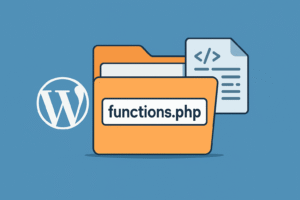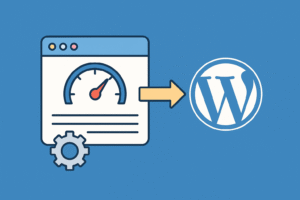1. Introduction
Securing your website with an SSL certificate is essential for protecting your website visitors’ data and boosting your website’s credibility. However, the cost associated with obtaining an SSL certificate can deter many beginner website owners. Fortunately, there are free SSL certificate options available that can provide the same level of security. In this ultimate beginner’s guide, we will walk you through the process of obtaining a free SSL certificate for your WordPress website, ensuring that your site is safe and trustworthy without breaking the bank.
2. The importance of SSL certificates for your WordPress website
One might wonder, why is an SSL certificate so important for a WordPress website? The answer lies in the security and trust it brings to your site. An SSL certificate encrypts the communication between your website and its visitors, ensuring that any sensitive information shared, such as login credentials or payment details, is protected from potential hackers.
Furthermore, having an SSL certificate in place signals to your visitors that your website is trustworthy. This is particularly crucial when running an online business or collecting personal information from users.
By implementing an SSL certificate, you not only safeguard your visitors’ data but also improve your website’s search engine rankings. Search engines like Google prioritize secure websites in their search results, helping you to reach a wider audience and enhance your online visibility.
In the next section, we will explore the different types of SSL certificates available and help you determine which one is most suitable for your WordPress website. Stay tuned!
3. Understanding the different types of SSL certificates
Understanding the different types of SSL certificates
Now that we’ve established the importance of having an SSL certificate for your WordPress website, let’s dive into the various types of certificates available. It’s essential to understand these options to determine which one best suits your needs.
1. Domain Validated (DV) SSL certificate: This is the most basic type of certificate and is relatively easy to obtain. It verifies that you own the domain but doesn’t provide extensive validation of your business or organization.
2. Organization Validated (OV) SSL certificate: This certificate not only verifies domain ownership but also conducts a more thorough validation process, including verifying the organization’s credentials. This provides an extra layer of assurance to your visitors.
3. Extended Validation (EV) SSL certificate: This is the highest level of validation and offers the most trust to your visitors. The EV certificate displays a green padlock with the company name in the address bar, indicating that your website is secure and trustworthy.
In the following section, we will discuss the steps involved in obtaining a free SSL certificate for your WordPress website. Stay tuned to learn more about the process!
4. Step-by-step guide to obtaining a free SSL certificate for your WordPress website
Obtaining a free SSL certificate for your WordPress website is easier than you might think. In this section, we will walk you through the step-by-step process to ensure a seamless implementation.
Step 1: Choose a reliable SSL provider
There are several trusted SSL providers that offer free certificates, such as Let’s Encrypt, Cloudflare, and SSL For Free. Research each provider to determine which one best aligns with your needs.
Step 2: Install and activate the SSL plugin
To simplify the SSL installation process, install and activate an SSL plugin on your WordPress website. Popular options include Really Simple SSL, SSL Zen, and WP Encrypt.
Step 3: Generate a certificate signing request (CSR)
In this step, you will need to generate a CSR, which is a file containing important information about your website. Most SSL plugins have a built-in feature to generate a CSR. Alternatively, you can consult your hosting provider for assistance.
Step 4: Follow the provider’s instructions for certificate issuance
Once you have the CSR, follow the instructions provided by your chosen SSL provider to obtain your free SSL certificate. This usually involves submitting the CSR and completing a verification process.
Step 5: Configure your website to use HTTPS
After receiving your SSL certificate, configure your website to use HTTPS instead of HTTP. Most SSL plugins have an automatic feature to handle this, making it a hassle-free process.
By following these steps, you can secure your WordPress website with a free SSL certificate, ensuring a safe and trustworthy experience for your visitors. In the next section, we will discuss the importance of regularly updating your SSL certificate. Stay tuned!
Remember, obtaining a free SSL certificate not only boosts your website’s security but also enhances your website’s search engine ranking and improves user trust. So, let’s dive right into the next section!

5. Best practices for implementing and managing SSL certificates
Now that you have successfully obtained a free SSL certificate for your WordPress website, it is crucial to implement and manage it effectively. In this section, we will discuss some best practices to ensure the continued security and functionality of your SSL certificate.
1. Regularly update your SSL certificate:
SSL certificates have an expiration date, typically ranging from 90 days to two years. It is essential to stay proactive and renew your certificate before it expires. Set up reminders or enable automatic renewal options offered by your SSL provider.
2. Monitor your certificate’s validity:
Regularly check the validity of your SSL certificate to ensure it hasn’t been revoked or expired. Keep an eye on any email notifications or alerts sent by your SSL provider regarding the status of your certificate.
3. Update your website URLs:
To take full advantage of the security and SEO benefits of SSL, it is crucial to update all URLs on your website to use HTTPS instead of HTTP. This includes internal links, images, scripts, and any other resources.
4. Implement secure HTTPS redirects:
To ensure a seamless user experience, set up proper redirects to automatically redirect HTTP traffic to HTTPS. This can be done by modifying your website’s .htaccess file or using a plugin such as Really Simple SSL.
5. Regularly backup your website:
Backing up your website ensures that you have a copy of your website’s data in case of any unforeseen events or issues. Regularly scheduled backups help you restore your website quickly if needed.
By implementing these best practices, you can effectively manage and maintain the security of your SSL certificate. In the next section, we will discuss some common challenges and how to troubleshoot them. Stay tuned for more valuable insights!
6. Common challenges and troubleshooting tips
While obtaining and implementing a free SSL certificate for your WordPress website is a crucial step towards securing your site, it is not without its challenges. In this section, we will explore some common issues that you may encounter and provide troubleshooting tips to help you resolve them.
1. Mixed content warnings:
After migrating to HTTPS, you may encounter mixed content warnings, indicating that some resources on your site are still being loaded over HTTP. Use a tool like the ‘Why No Padlock?’ website to identify and fix these insecure resources. Additionally, consider using a plugin like Really Simple SSL to automatically fix mixed content issues.
2. Incompatible plugins or themes:
Certain plugins or themes may not be compatible with SSL, causing issues with the functionality or layout of your website. Consult the documentation and support forums of the problematic plugins or themes for guidance on resolving these compatibility issues.
3. SSL handshake errors:
Sometimes, visitors may experience SSL handshake errors when accessing your site. This can be caused by various factors, such as incorrect SSL configuration or outdated SSL protocols. Consult your SSL provider’s documentation or reach out to their support team for assistance in troubleshooting and resolving these errors.
4. SSL redirects not working:
If you’re encountering issues with proper HTTP to HTTPS redirects, ensure that your .htaccess file is correctly configured. Additionally, double-check any settings in your SSL plugin or hosting provider’s control panel to ensure the redirects are enabled and functioning correctly.
5. Performance impact:
Enabling SSL can result in a slight performance impact on your website due to the overhead of encrypting and decrypting data. To optimize performance, consider using a caching plugin, optimizing your site’s code and media files, and utilizing a content delivery network (CDN).
By being aware of these common challenges and having the troubleshooting tips at your disposal, you can overcome any obstacles that may arise during the implementation and management of your free SSL certificate. Stay tuned for the final section, where we will discuss additional resources and further tips to enhance your website’s security and performance.
7. Conclusion and next steps for securing your WordPress website
Congratulations! You have successfully obtained a free SSL certificate for your WordPress website and navigated through potential challenges along the way. By following the troubleshooting tips provided, you can ensure a smooth implementation and management process for your SSL certificate.
However, obtaining an SSL certificate is just the first step towards securing your website. There are still additional measures you can take to enhance your website’s security and performance. In the next section, we will discuss some additional resources and provide further tips to help you take your website’s security to the next level.
Stay tuned for the final section, where we will explore various security plugins, best practices for secure login credentials, and other essential steps to protect your WordPress website from hacking attempts and vulnerabilities. With these added layers of security, you can have peace of mind knowing that your website is well-protected and your visitors are safe.
Continue your journey toward a secure WordPress website by reading the final section.




